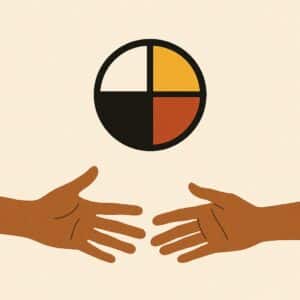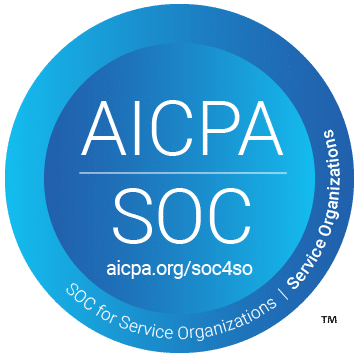Stronger Together: The Relationship Between AIVRS Programs and VR State Agencies
From Debate to Brotherhood: A Journey into AIVRS
My first exposure to American Indian Vocational Rehabilitation Services (AIVRS) was at a Diné training in Oklahoma in the late 1990s. Jim Warne—then with San Diego State University and now President and Founder of Warrior Society Development, LLC—was the primary trainer. I was a new state vocational rehabilitation (VR) administrator, armed with lots of ideas about how vocational rehabilitation agencies should be working with tribal programs. My ideas were, frankly, misguided.
Jim, a member of the Oglala Lakota (Sioux) Nation, was presenting about the importance of traditional healing practices and Native American values in vocational rehabilitation for tribal members with disabilities. I didn’t buy it. I got into a lengthy debate with Jim, insisting that only licensed medical professionals and “regular” VR practices should be supported. I couldn’t see the need for what he proposed.
Of course, I was wrong.
We debated deep into the night and on into the morning. That night marked my conversion. I came to understand the legitimacy, power, and importance of culturally grounded VR practices. Jim became not only a colleague but my lifelong brother and friend. Since that time, we’ve delivered multiple national presentations together on the significance of AIVRS and the essential need for state VR agencies to partner with tribal programs.
Jim would later say, “I do recall our first discussions and your openness to seeing how our traditional healing ways of knowing could balance with the general VR process to increase successful outcomes.” As I recall, I may have been more hardheaded than he remembers—but his point is well taken. State VR leadership must be open to how “traditional healing ways of knowing” can improve success for Native American participants with disabilities.
The Roots of AIVRS
American Indian Vocational Rehabilitation Services (AIVRS) programs provide services to American Indians and Alaska Natives with disabilities who reside on or near federal or state reservations, Alaska Native villages, rancheros, pueblos—or in the case of Oklahoma, traditional tribal lands. These services are authorized under Section 121 of the Rehabilitation Act, as amended.
In the 1970s, the Navajo Nation began pushing for more culturally relevant services within public VR. Tribal members’ needs were not being met. Dr. Elmer Guy and Treva Roanhorse became key advocates, working closely with Congress and the Arizona state VR agency to support the development of uniquely tailored services.
Their efforts led to the creation of Section 130 of the Rehabilitation Act, which provided initial funding for tribal VR programs. This evolved into Section 121, which became the foundation for today’s AIVRS.
The Rehabilitation Act was amended in 1978, and the first funding was released in 1981. The Navajo Nation received its initial support through a three-year grant from the state of Arizona in 1975 and became the first AIVRS program to receive a five-year grant in 1981 from the Rehabilitation Services Administration (RSA). They are currently celebrating their 50th year of operation! The 1992 Amendments to the Act formally authorized the funding of eight tribal VR programs. Today, there are over 90 programs (and they are still growing) funded through discretionary grants from the RSA. These grants are awarded in five-year cycles, requiring tribal programs to reapply in a competitive process, with a 10% tribal match requirement.
Culturally Grounded Services That Work
Historically, state VR systems often failed to understand or meet the cultural needs of Native American participants. Many were either unserved or underserved. AIVRS changed this landscape.
These programs provide vocational rehabilitation counseling and services that are both culturally relevant and community driven. They honor traditional values and practices, drawing from family and elder support, and incorporate long-practiced healing methods. The result: services that are trusted, accepted, and effective.
AIVRS programs typically have preferential hiring of tribal members who are deeply knowledgeable about their communities; however, there are also many non-native qualified staff who are dedicated to tribal rehabilitation. They are trained to meet federal VR program requirements while also preserving their cultural heritage in the delivery of services.
One central concept in tribal practices is the Medicine Wheel, symbolizing the four directions—North, East, South, and West—and representing balance across the physical, mental, emotional, and spiritual aspects of life. It’s more than a symbol; it is a framework for healing and harmony, guiding how many tribal programs approach rehabilitation. The circle represents the interconnectedness of all things, a worldview that shapes AIVRS philosophy.
The Evidence: Better Outcomes, Greater Reach
The results speak for themselves. AIVRS programs consistently show higher employment rates and more culturally grounded outcomes than many state vocational rehabilitation agencies. They extend services into rural and remote communities, reaching participants who might otherwise go unserved.
Not only do they serve their own members, but many AIVRS programs also work collaboratively with VR state agencies—offering cultural insight and shared case management to better support Native consumers. Participants may receive services through AIVRS, state VR, or both.
The Challenge and the Collaboration
Despite their success, AIVRS programs face ongoing challenges. State VR agencies typically have greater financial and staffing resources, and AIVRS programs often depend on these partnerships to provide high-cost services like assistive technology, training, or medical support.
A common obstacle is the lack of cultural understanding among state VR leadership and VR counselors. It can be difficult for a state counselor to grasp the unique strengths and roles of AIVRS professionals. Cultural training is essential to improving this relationship—and when done well, it leads to reduced duplication, shared resources, and better outcomes.
Under the Rehabilitation Act, state VR agencies and AIVRS programs must establish cooperative agreements. These must be government-to-government, with director-to-director accountability. That means the tribal VR director is an equal partner—not a subordinate—to the state director. These agreements also ensure that AIVRS programs are represented on state rehabilitation councils and often state independent living councils as well.
Building Bridges: Liaisons and Learning
Many state agencies have created the position of tribal liaison to strengthen relationships with AIVRS programs. While helpful, this role is not a substitute for genuine director-level collaboration. Still, tribal liaisons often serve as cultural brokers and help facilitate mutual understanding.
Training and Advocacy
Two national organizations have been instrumental in supporting AIVRS efforts:
- CANAR – The Consortia of Administrators for Native American Rehabilitation, established in 1993, is a member-driven organization advocating for effective vocational rehabilitation services for American Indian and Alaska Native individuals with disabilities.
- AIVRTTAC – The American Indian Vocational Rehabilitation Training and Technical Assistance Center provides technical assistance, training, and grant support through a partnership with Northern Arizona University and the RSA.
These two organizations offer culturally grounded training for both AIVRS and state VR staff, helping bridge cultural divides and build stronger programs.
Full Circle
I was forever changed on that night nearly 30 years ago when Jim Warne challenged my thinking. That experience set me on a lifelong path of advocacy and learning. I’ve attended numerous CANAR conventions and built lasting relationships with tribal leaders and counselors—relationships rooted in mutual respect, cultural understanding, and shared purpose.
As a state VR director, I co-authored cooperative agreements that made these partnerships real. I’ve seen firsthand how culturally relevant services transform lives. Now, in my role as Strategic Account Manager for Aware Express for AIVRS, I continue this work—because this relationship, and the people it serves, matter deeply to me.
Whatever my future roles may be, this much I know:
AIVRS makes a difference.
It changed me. It continues to change lives.
*I want to thank Jim Warne, Wayne Dagel (Director, AIVRTTAC), and Christopher Zilar (Director the Spokane Tribe Vocational Rehabilitation and CANAR board members) for assisting with historical information and review of this blog.
This blog has been edited with assistance of ChatGPT.



